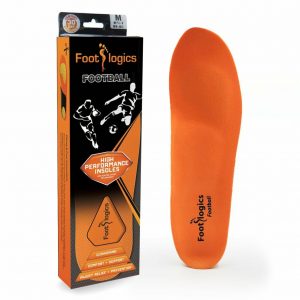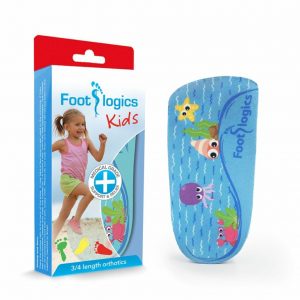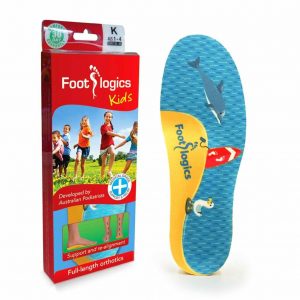Heel Spurs
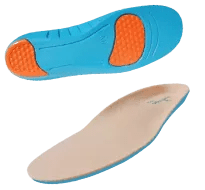
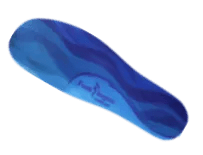
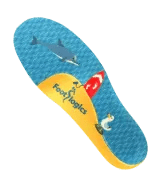
Recommended orthotics for Heel Spurs Insoles
Heel Spurs
Heel spurs are a common, painful foot condition that hundreds of thousands of Canadians suffer from every year. Fortunately, most people experience relief from effective and affordable treatment plans.
What is a Heel Spur?
A heel spur is a small, bony growth on the heel bone (medically referred to as the calcaneus). Interestingly enough, heel spurs are not actually the source of your pain and rather it is the inflamed tissue surrounding the spur that causes discomfort.
Symptoms
Heel spurs are typically the most painful in the morning as you take your very first steps out of bed. Most people experience a sharp, stabbing pain in the bottom or front of the heel bone that gradually diminishes into a dull ache as the day goes on. But after long periods of sitting or lying down, the piercing pain returns.
What causes a heel spur to develop?
Heel spurs develop because of a condition referred to as Plantar Fasciitis (Latin for “inflammation of the Plantar Fascia”). The Plantar Fascia is a flat band of tissue that runs from your toes to your heel bone underneath your foot. When it functions properly, this tissue is flexible and strong, supporting your arch. In other cases, the Plantar Fascia is excessively stretched causing micro-tears in the tissue to occur, which leads to irritation and inflammation where the Plantar Fascia attaches to the heel bone. Weight gain, high stress, old age and poor foot function are just a few of the most common contributory factors. The constant pulling action is what eventually causes the development of a bony growth, called a heel spur.
Where the pain comes from..
During long periods of rest (while you’re sitting down, driving or sleeping), the Plantar Fascia shortens and tightens. When you get up, all of your body weight is applied to your feet and your Plantar Fascia is forced to stretch and lengthen in a single instant, causing irritation and micro-tearing. This is the sharp pain you feel.
Heel spurs are more likely to develop if:
- Over-pronation is present (the flattening and rolling in of the foot with each step)
- The patient stands or walks on hard surfaces for long periods of time
- Significant weight gain has occurred or you are pregnant
- You have tight calf muscles
Heel Spur treatments
The good news is that Plantar Fasciitis and heel spurs can be treated using non-surgical, non-invasive methods. The most common treatments include:
Rest. Give your body a chance to heal the inflamed area of your foot. Avoid prolonged physical activity, standing on hard surfaces, walking, running and impact sports.
Ice. Apply ice to the affected area for 5 minutes two to three times daily to decrease inflammation and reduce pain.
Lose weight. Remember, your feet are forced to bear all of your body weight. Make sure you maintain a healthy weight to reduce this burden.
Stretch. Click here to view a targeted stretching program specifically designed for those suffering from heel spurs.
Get orthotics. Address the fundamental cause of heel spurs: the biomechanics of your foot.
Orthotic inserts for Heel Spurs
Orthotic insoles tackle the root cause of the problem. Their special configuration works to correct the abnormal mechanics of your foot.
Footlogics orthotics were developed by Australian podiatrists and are designed to support the arches of your feet and control over-pronation. These corrections help to release the tension on the Plantar Fascia to effectively treat the condition. Footlogics orthotics for heel spurs also have a shock-absorbing heel pad that reduces impact for added comfort and pain relief.
How insoles for Heel Spurs work...
When evaluating someone with heel pain, x-rays frequently reveal the presence of heel spurs. Plantar fasciitis is also known as heel spur syndrome from time to time. In point of fact, 45% of persons who experience heel pain will have a plantar fascial spur of some size, while only fifteen percent of people who do not have heel pain will have one. It is common practise to attribute the pain to the heel spur. However, this blame is not where it belongs. The problem with this notion is that the only way for the pain to stop is for the heel spur, which is causing it, to be surgically removed before the problem can be resolved.
This is not the case at all. In spite of the fact that it may feel as though a knife is piercing through the heel and it may appear reasonable to assume that the heel spur is to blame for this, the spur is actually rather little, often ranging from around 2 millimetres to 5 millimetres in size. Since the spur of the heel extends in a direction that is parallel to the ground, it does not actually cut into the skin of the heel. On the underside of the heel, the heel spur is often buried deep into the thick plantar fascia and is covered by at least 10 millimetres of fatty tissue and skin.
An expansion of the plantar fascia, which is typically two to three times as thick as it would normally be in patients with plantar fasciitis, is the source of the swelling that is frequently felt around the bottom of the foot.
Bone scans, magnetic resonance imaging (MRI), and computed tomography (CT) scans are only required in situations where the diagnosis is uncertain. Even while they frequently reveal anomalies in patients with plantar fasciitis, this alone is not sufficient to justify their use in the diagnostic process for plantar fasciitis.
Heel spur symptoms can be alleviated by wearing an orthotic insole inside the shoe. Many insoles on the market only provide cushioning under the heel bone. Even though cushioning is important the key to successful heel spur treatment is orthotic re-alignment of the feet and ankle joints. Re-alignment of the foot will reduce pressure and tension on the ligament, in particular the plantar fascia band under the foot. In turn, this will assist with reducing inflammation and pain under the heel.

